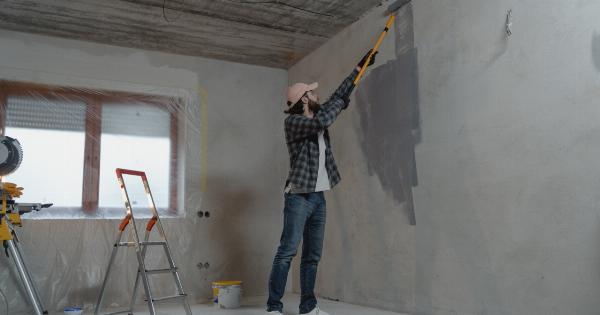Prostate hyperplasia, also known as benign prostatic hyperplasia (BPH), is a condition where the prostate gland becomes enlarged.
It occurs usually in men over the age of 50, and can cause urinary difficulties, such as frequent urination, difficulty starting or stopping urine flow, and the need to urinate at night. In severe cases, it can lead to kidney damage and urinary tract infections. While medication can help manage the symptoms, surgery is often necessary to reduce the size of the prostate.
In recent years, minimally invasive surgical options have become available for the treatment of BPH.
Greenlight Laser Therapy
Greenlight laser therapy is a minimally invasive procedure that uses a high-powered laser to vaporize excess prostate tissue.
The procedure is done under local or general anesthesia, and involves inserting a small fiber optic cable through the urethra and into the prostate. Once the fiber is in place, the laser is used to vaporize the excess tissue that is causing the obstruction. The procedure usually takes less than an hour, and patients can go home the same day.
The recovery time is quick, and patients can usually resume normal activities within a few days.
Transurethral Microwave Therapy (TUMT)
Transurethral microwave therapy (TUMT) uses microwaves to heat and destroy excess prostate tissue. It is performed under local anesthesia, and involves inserting a small probe through the urethra and into the prostate.
The probe heats the excess tissue and destroys it. The procedure usually takes about an hour, and patients can go home the same day. Recovery time is quick, and patients can usually resume normal activities within a few days.
Transurethral Needle Ablation (TUNA)
Transurethral needle ablation (TUNA) uses radiofrequency energy to heat and destroy excess prostate tissue. It is performed under local anesthesia, and involves inserting a small needle into the prostate through the urethra.
The needle heats up and destroys the excess tissue. The procedure usually takes about an hour, and patients can go home the same day. Recovery time is quick, and patients can usually resume normal activities within a few days.
Prostatic Artery Embolization (PAE)
Prostatic artery embolization (PAE) is a newer procedure, where interventional radiologists use tiny beads to block blood flow to the prostate gland. This causes the prostate to shrink, and reduces the symptoms of BPH.
The procedure is performed under local anesthesia, and involves inserting a small catheter into an artery in the groin. The catheter is then guided to the prostate artery, and tiny beads are injected to block blood flow. The procedure usually takes about an hour, and patients can go home the same day.
Recovery time is quick, and patients can usually resume normal activities within a few days.
UroLift
UroLift is a minimally invasive procedure that uses small implants to lift and hold the enlarged prostate tissue out of the way. This reduces the pressure on the urethra, and allows for normal urine flow.
The procedure is performed under local anesthesia, and involves inserting a small instrument through the urethra to place the implants. The procedure usually takes about an hour, and patients can go home the same day. Recovery time is quick, and patients can usually resume normal activities within a few days.
Rezum
Rezum is a minimally invasive procedure that uses steam to reduce excess prostate tissue. It involves inserting a small probe through the urethra and into the prostate. The probe releases steam that heats the excess tissue and causes it to shrink.
The procedure is performed under local anesthesia, and usually takes less than an hour. Patients can go home the same day, and recovery time is quick. Patients can usually resume normal activities within a few days.
Holmium Laser Enucleation of the Prostate (HoLEP)
Holmium laser enucleation of the prostate (HoLEP) is a procedure that uses a laser to remove the inner portion of the prostate gland that is causing the obstruction.
The procedure is performed under general or spinal anesthesia, and involves inserting a small instrument through the urethra and into the prostate. The laser is used to remove the excess tissue, and the prostate is then flushed out. The procedure usually takes about an hour, and patients can go home the same day.
Recovery time is longer than with other minimally invasive procedures, but patients can usually resume normal activities within a few weeks.
Transurethral Resection of the Prostate (TURP)
Transurethral resection of the prostate (TURP) is a traditional surgical option for BPH. It involves removing the inner portion of the prostate gland that is causing the obstruction.
The procedure is performed under general or spinal anesthesia, and involves inserting a small instrument through the urethra and into the prostate. The excess tissue is then removed using a wire loop. The procedure usually takes about an hour, and patients may need to stay in the hospital for a few days.
Recovery time is longer than with minimally invasive procedures, and patients may need to avoid physical activity for several weeks.
Conclusion
Minimally invasive surgical options have become increasingly popular for the treatment of BPH. These procedures are less invasive than traditional surgical options, and have a shorter recovery time.
They can also be done under local anesthesia, which reduces the risk of complications. Patients with BPH should discuss the options with their doctor to determine the best treatment plan.






























